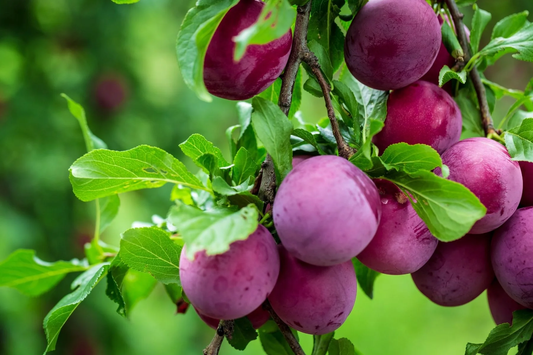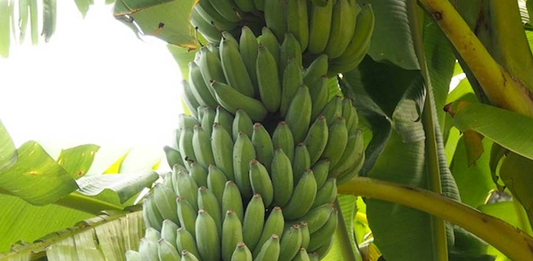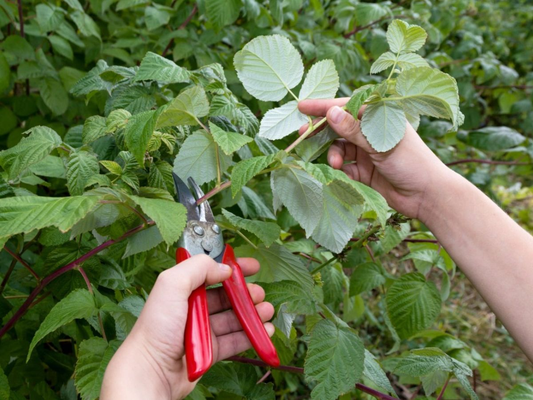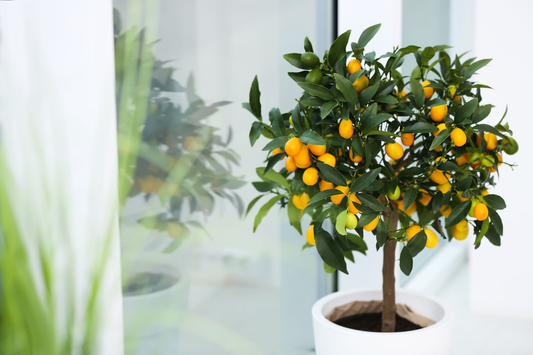How to Grow Vegetables in a Greenhouse: Boost Your Harvest
Share
1. Introduction
Greenhouse gardening offers a unique opportunity for gardeners to extend their growing season, grow a wider variety of crops, and protect plants from unpredictable weather. By creating a controlled environment, greenhouses allow vegetables to thrive regardless of outside climate conditions. Whether you're a seasoned gardener or a beginner, greenhouse gardening can enhance your gardening experience and boost your harvest.
Benefits of Greenhouse Gardening:
- Climate Control: Maintain an optimal growing environment year-round.
- Pest and Disease Protection: Minimize the risk of pests and diseases affecting crops.
- Extended Growing Season: Grow vegetables outside of the typical outdoor growing season.
- Higher Yields: Controlled conditions can lead to higher and more consistent crop yields.
Importance of Growing Vegetables in a Greenhouse:
- Extended Growing Season: In a greenhouse, you can start your vegetables earlier in the spring and continue harvesting well into the winter months.
- Protection from Harsh Weather: Greenhouses shield plants from extreme temperatures, heavy rain, or pests.
- Year-Round Harvest: With careful planning, you can harvest fresh vegetables at any time of the year.
- Efficiency in Water Usage: A greenhouse reduces water evaporation, making irrigation more efficient.
This blog will guide you through:
- Choosing the right vegetables for your greenhouse.
- Setting up and preparing your greenhouse for planting.
- Managing environmental factors like light, temperature, and humidity.
- Tips for successfully growing and maintaining your vegetables.
- Harvesting and post-harvest care to maximize yields.
Whether you're growing tomatoes, peppers, or leafy greens, a greenhouse can significantly improve your chances of a successful harvest. Read on to learn how to make the most of your greenhouse space and grow vegetables that thrive in controlled conditions.

2. Why Grow Vegetables in a Greenhouse?
Growing vegetables in a greenhouse offers several key advantages, making it an appealing option for gardeners who want to maximize their harvest and extend their growing season. The controlled environment of a greenhouse allows you to manage factors like temperature, humidity, and light, creating the ideal space for vegetable growth. Let's explore the many benefits of greenhouse gardening.
Advantages of Greenhouse Gardening:
-
Climate Control: Greenhouses provide consistent temperature and humidity, which helps create a perfect growing environment for your vegetables. You can regulate heat during winter and prevent excessive heat during the summer.
- Temperature: Control temperature to ensure vegetables aren’t exposed to freezing conditions or extreme heat.
- Humidity: Maintain optimal humidity levels to prevent plant stress and ensure healthy growth.
- Light: Greenhouses maximize natural light while minimizing the risks of too much direct sunlight that can harm plants.
-
Protection from Pests and Diseases: With a greenhouse, plants are shielded from many pests and diseases that affect outdoor crops. The enclosed environment reduces exposure to harmful insects and diseases.
- Pest Control: Limited access for pests and bugs means fewer chances of infestation.
- Reduced Disease Risk: The controlled environment prevents the spread of soil-borne diseases that are common in outdoor gardens.
-
Extended Growing Season and Higher Yields: With the ability to grow in a controlled environment, you can extend the growing season well beyond the typical outdoor planting times. This can result in larger harvests and healthier plants.
- Year-Round Growth: Start early in the spring and continue harvesting late into fall or even winter.
- Increased Yield: A more stable environment encourages plants to thrive, resulting in higher yields per plant.
Personal and Environmental Benefits:
- Fresh, Organic Produce Year-Round: Growing vegetables in a greenhouse means you can enjoy fresh, home-grown produce no matter the season, ensuring you have access to organic vegetables all year long.
-
Environmental Impact: Greenhouse gardening reduces your reliance on imported vegetables, which helps minimize food miles (the distance food travels from farm to plate). This results in a smaller carbon footprint and supports sustainable food practices.
- Less Transportation: Local produce means fewer greenhouse gas emissions from transportation.
- Sustainability: Growing your own food in a greenhouse supports a more sustainable lifestyle, promoting food independence.
3. Types of Greenhouses for Vegetable Growing
When it comes to growing vegetables in a greenhouse, there are various types to choose from depending on your gardening needs, space, and budget. Below are the most common greenhouse types, each with its own set of advantages and considerations.
Traditional Greenhouses:
-
Structure, Materials, and Setup: Traditional greenhouses are permanent structures built with materials like glass, polycarbonate, or plastic. They have rigid frames made from wood, aluminum, or steel, and require a solid foundation.
- Materials: Glass offers maximum light transmission, while polycarbonate provides better insulation. Polyethylene plastic is often used for its cost-effectiveness.
- Setup: Requires a level site, foundation, and professional installation, especially for larger models.
-
Pros and Cons:
-
Pros:
- Durable and long-lasting.
- Offers excellent climate control and insulation.
- Can accommodate a large number of plants.
-
Cons:
- Higher initial cost and setup.
- Requires more space and a solid foundation.
- May need professional installation, especially larger greenhouses.
-
Pros:
Hoop Houses or Polytunnels:
-
Advantages for Beginner Gardeners: Hoop houses are simpler and more affordable alternatives to traditional greenhouses. These structures are made of metal hoops covered with a layer of polyethylene plastic.
- Easy to assemble and can be done by a single person.
- Provides sufficient protection from weather and pests.
-
Durability, Cost, and Size Considerations: Hoop houses are durable, but they do not provide the same long-term durability as traditional greenhouses. However, they are much cheaper and easier to maintain.
- Cost: Low initial cost compared to traditional greenhouses.
- Size: Can be customized to fit different garden sizes, ideal for small to medium-scale vegetable growing.
- Durability: Can last up to 5-10 years with proper care.
Cold Frames and Mini Greenhouses:
-
Ideal for Small-Scale Vegetable Growing: Cold frames and mini greenhouses are perfect for gardeners with limited space. They can be placed in a backyard or even on a patio or balcony.
- Typically used for starting seedlings or extending the growing season for a few vegetables.
- Perfect for personal or small family gardens.
-
Cost-Effective and Portable: These small greenhouses are much cheaper than larger models and can be moved around based on sunlight and weather conditions.
- Cost: Highly affordable, especially when compared to larger greenhouse structures.
- Portability: Easy to move or store during offseason or harsh weather.
- Setup: Simple to set up, often requiring only basic tools.

4. Choosing the Right Vegetables for Greenhouse Growth
Choosing the right vegetables for your greenhouse is key to ensuring healthy growth and a productive harvest. Certain vegetables thrive in the controlled environment of a greenhouse, while others may struggle due to space, temperature, or light requirements. Here's a guide to help you select the best vegetables for greenhouse gardening.
Best Vegetables for Greenhouses:
-
Tomatoes: One of the most popular vegetables grown in greenhouses, tomatoes thrive in the warm, controlled environment of a greenhouse.
- Temperature: Prefer temperatures between 70–80°F (21–27°C).
- Light: Require full sunlight, making a greenhouse perfect for year-round growth.
- Space: Need vertical space for vines or support systems like trellises.
-
Peppers: Peppers grow well in greenhouses due to their need for warmth and sunlight.
- Temperature: Require temperatures around 70–85°F (21–29°C).
- Space: Compact plants that are ideal for smaller greenhouse spaces.
-
Cucumbers: Greenhouses provide the warmth and moisture cucumbers need to thrive.
- Temperature: Ideal temperatures are 70–80°F (21–27°C).
- Space: Grow vertically or in containers to save space.
-
Herbs: Greenhouses are perfect for growing herbs like basil, thyme, and cilantro, as they thrive in controlled conditions.
- Temperature: Prefers temperatures around 60–75°F (15–24°C).
- Light: Enjoys full sun and benefits from the stable light conditions in a greenhouse.
-
Leafy Greens (Lettuce, Spinach, Kale): These vegetables do well in the cooler temperatures that greenhouses can maintain.
- Temperature: Thrive in temperatures between 50–70°F (10–21°C).
- Space: Great for small-scale growing, as they don't require much space.
Vegetables to Avoid in Greenhouses:
-
Root Vegetables (Potatoes, Carrots, Beets): While root vegetables can technically be grown in greenhouses, they often require a lot of space and deeper soil than a greenhouse environment may allow.
- Space Issues: Root vegetables need deep soil and extensive space, which can be a challenge in a small greenhouse.
- Temperature: Some root vegetables may not benefit from the warmer temperatures of a greenhouse.
-
Vegetables Needing Less Heat (Cabbage, Broccoli): These vegetables grow better in cooler outdoor conditions and may not thrive in the higher temperatures of a greenhouse.
- Temperature Sensitivity: Cabbage and other cool-weather crops may bolt or not mature properly in warmer greenhouse temperatures.
- Space Considerations: While not a major issue, these plants are better suited to outdoor gardens during cooler months.

5. Preparing Your Greenhouse for Planting
Before you start planting vegetables in your greenhouse, it's essential to prepare the space to ensure optimal growing conditions. This involves setting up the structure, preparing the soil, and ensuring that temperature and humidity levels are well-regulated. Here’s a comprehensive guide to preparing your greenhouse for planting:
Setting Up the Structure:
-
Ensure Proper Ventilation and Air Circulation:
- Ventilation is crucial to prevent overheating and to provide fresh air for plant growth. Without proper airflow, plants can suffer from disease and poor growth.
- Install roof vents, side vents, or louvres that can be opened or closed to control the airflow inside your greenhouse.
- Consider using circulation fans to help move air around, especially during hot weather.
-
Positioning the Greenhouse for Maximum Sunlight:
- To maximize sunlight, position your greenhouse so that it receives direct sun exposure for most of the day.
- The greenhouse should be oriented with its longest side facing south (in the Northern Hemisphere) to ensure even sunlight distribution.
- Ensure there are no tall structures or trees blocking sunlight from entering the greenhouse, especially in the morning and afternoon hours.
Soil Preparation:
-
Soil Quality and Fertilization Needs:
- Good-quality soil is essential for healthy plant growth. Test the soil pH and amend it according to the needs of your plants. Most vegetables prefer slightly acidic to neutral soil (pH 6–7).
- Incorporate organic matter such as compost to improve soil structure, fertility, and water retention.
- Consider using organic fertilizers or slow-release nutrients to ensure your vegetables get the nutrients they need throughout the growing season.
-
Using Raised Beds or Containers for Ease of Use and Better Drainage:
- Raised beds are ideal for greenhouses, as they allow for better soil drainage and prevent waterlogging, which can lead to root rot.
- Containers are a great option for smaller spaces or for growing vegetables that require different soil types.
- Ensure your raised beds or containers have proper drainage holes to prevent water from accumulating at the bottom.
Temperature Control and Humidity:
-
Installing Fans, Heaters, or Shades for Temperature Regulation:
- During the hot summer months, greenhouse temperatures can rise rapidly, so installing fans will help circulate air and cool down the space.
- In colder months, consider using heaters to maintain a consistent temperature, especially for heat-loving crops.
- Shade nets or shade cloths can help regulate excessive sunlight and prevent overheating during the summer. Adjust the amount of shade based on the temperature and the needs of your plants.
-
Maintaining Optimal Humidity Levels for Different Crops:
- Different vegetables have varying humidity needs. For example, leafy greens like spinach thrive in higher humidity, while tomatoes prefer drier conditions.
- Use a hygrometer to monitor the humidity level in your greenhouse. Aim for a relative humidity of around 60-70% for most vegetables.
- If humidity is too high, use fans or dehumidifiers to reduce moisture, while misting systems can help increase humidity when necessary.

6. Planting Techniques for Success in a Greenhouse
Successfully planting vegetables in a greenhouse requires careful planning and attention to detail. From choosing between starting from seeds or transplants to properly spacing your plants, every step influences the health and yield of your crops. Here’s a guide to planting techniques that will help you achieve success in your greenhouse garden:
Starting from Seeds vs. Transplants:
-
Advantages of Each Method Based on Vegetable Type:
-
Starting from Seeds: Ideal for vegetables that have long growing seasons or are difficult to find as transplants. Examples include tomatoes, peppers, and cucumbers.
- Cost-Effective: Seeds are cheaper than purchasing transplants.
- Variety: You have a wider selection of varieties to choose from.
-
Using Transplants: Great for vegetables that require a jump-start or are difficult to germinate. Examples include herbs and lettuce.
- Time-Saving: Transplants provide a head start, which is useful for plants with short growing seasons.
- Less Risk: Transplants eliminate the risk of poor germination.
-
Starting from Seeds: Ideal for vegetables that have long growing seasons or are difficult to find as transplants. Examples include tomatoes, peppers, and cucumbers.
-
Recommended Time Frames for Planting:
- For most vegetables, it’s ideal to start seeds 6–8 weeks before the last expected frost date.
- Transplants should be introduced into the greenhouse after hardening off for about a week, typically when the outdoor temperatures are consistently above 50°F (10°C).
Spacing and Plant Arrangement:
-
Proper Spacing to Ensure Healthy Growth and Airflow:
- Ensure that each plant has enough space to grow without overcrowding. This allows for proper air circulation, which helps reduce the risk of disease.
- As a general rule, follow the spacing recommendations on the seed packet or plant label to avoid over-crowding.
- Consider grouping plants with similar light, temperature, and watering needs together to optimize space and care.
-
Vertical Gardening Methods for Limited Space:
- Use Vertical Supports: Vertical gardening is a great way to maximize limited greenhouse space. Install trellises, cages, or stakes to support climbing plants like tomatoes, cucumbers, and beans.
- Hanging Baskets: Consider hanging baskets for smaller plants like herbs and strawberries, allowing you to grow more while saving floor space.
- Stacked Planters: Use multi-level planters or shelving to grow small leafy greens or herbs.
Watering Techniques:
-
Drip Irrigation Systems for Efficient Watering:
- Drip irrigation systems deliver water directly to the base of each plant, minimizing water wastage and reducing the chance of disease that can be caused by wet foliage.
- Set up a timer to ensure that your plants get consistent moisture without over-watering.
- For large greenhouses, drip irrigation is a cost-effective and efficient way to water multiple plants simultaneously.
-
Importance of Avoiding Over-Watering:
- Over-watering is a common mistake in greenhouses. Plants in a greenhouse tend to retain moisture better due to the controlled environment.
- Check the moisture level in the soil regularly to avoid waterlogging, which can lead to root rot and other diseases.
- If using containers, ensure that they have proper drainage to prevent water from accumulating at the bottom.
7. Managing Light and Temperature in Your Greenhouse
Proper light and temperature management are essential for ensuring your greenhouse vegetables thrive. Both factors directly impact plant growth and productivity. In this section, we’ll explore how to maximize natural light and regulate temperature to create the best environment for your crops.
Maximizing Natural Light:
-
Use of Reflective Materials to Optimize Light Use:
- Reflective materials like Mylar or white plastic can be installed on the walls or ceilings of your greenhouse to bounce light back onto your plants, ensuring that they receive adequate light even in shaded areas.
- Reflective surfaces are especially useful in winter when sunlight is less direct and more limited.
-
Importance of Light for Photosynthesis:
- Light is crucial for photosynthesis, which helps plants produce energy. Without sufficient light, plants will be weak, slow-growing, and more prone to disease.
- Make sure your greenhouse receives at least 6–8 hours of direct sunlight per day to support healthy plant growth, especially for sun-loving vegetables like tomatoes and peppers.
Temperature Regulation:
-
Keeping Temperature Within Optimal Ranges (60–75°F):
- Vegetables in a greenhouse thrive when temperatures are consistently maintained between 60°F and 75°F (15–24°C). This range encourages healthy growth without stressing plants.
- For plants that prefer cooler temperatures (like leafy greens), aim for the lower end of the range, while heat-loving vegetables (like tomatoes and peppers) can thrive at the higher end.
-
Use of Thermostats, Fans, and Heaters to Control Extremes:
- Thermostats: Install thermostats to monitor and control the temperature inside the greenhouse automatically. These devices can trigger heaters or fans to keep conditions within the desired range.
- Fans: Use fans to increase air circulation, which helps maintain even temperatures and prevents hot spots that could stress plants.
- Heaters: In colder months, invest in a greenhouse heater to maintain a stable temperature, ensuring that plants remain warm enough to continue growing during cooler seasons.

8. Greenhouse Maintenance for Healthy Vegetables
Maintaining a clean and healthy greenhouse is essential to preventing pests and diseases that can harm your vegetables. Regular upkeep ensures that your plants thrive and produce healthy, abundant crops. Let’s take a closer look at key maintenance practices for keeping your greenhouse environment in top shape.
Regular Cleaning and Sanitation:
-
Keeping Pests and Diseases at Bay by Cleaning Surfaces:
- Regularly clean the floors, walls, and shelves of your greenhouse to remove debris, plant matter, and dust that can harbor pests and diseases.
- Consider power washing your greenhouse surfaces during the off-season to ensure that no harmful pathogens linger in corners or on surfaces.
-
Disinfecting Tools and Containers:
- Sanitize your tools, pots, and containers regularly to prevent the spread of diseases from one plant to another.
- Use a solution of 10% bleach or hydrogen peroxide to disinfect your equipment after use, especially if you’ve been working with sick plants.
Pest and Disease Control:
-
Natural Remedies and Organic Pest Control:
- Utilize organic methods like neem oil, insecticidal soap, or diatomaceous earth to keep pests at bay without harming beneficial insects.
- Introduce beneficial insects, such as ladybugs, to help control aphids and other pests naturally.
-
Identifying Common Greenhouse Pests like Aphids and Whiteflies:
- Aphids: Small, soft-bodied insects that can damage plants by sucking sap. Look for curled leaves and sticky residue on plants.
- Whiteflies: These tiny, flying pests are often found on the undersides of leaves and can spread diseases like the tomato yellow leaf curl virus.
- Regularly inspect your plants for signs of pests and take prompt action to control them before they cause significant damage.
9. Harvesting and Post-Harvest Care
Harvesting your vegetables at the right time and properly caring for them afterward are crucial steps in maximizing their flavor, quality, and shelf life. In this section, we’ll cover how to tell when your vegetables are ready to harvest and the best practices for preserving their freshness after picking.
When to Harvest:
-
Knowing the Right Time to Pick for Maximum Flavor and Quality:
- Harvest vegetables when they reach their optimal size and color, as this is when they have the best flavor and nutritional value.
- For leafy greens like lettuce and spinach, harvest early in the morning for the best flavor before they wilt in the heat of the day.
- For fruiting vegetables like tomatoes and peppers, wait until they are fully ripe or have reached the desired color and firmness.
-
Tips for Harvesting Without Damaging the Plant:
- Use sharp, clean scissors or pruning shears to cut fruits and vegetables, ensuring you don’t damage the plant or other parts of the crop.
- When harvesting, try to handle the plants gently to avoid breaking stems or crushing leaves, which can lead to infections.
Post-Harvest Care:
-
Storage Methods for Prolonging Shelf Life (Cold Storage, Freezing):
- Store vegetables like leafy greens and herbs in a cool, dry place or in the refrigerator to extend their freshness.
- For long-term storage, freeze vegetables like tomatoes, peppers, and peas. Make sure to blanch them first to preserve texture and flavor.
-
Best Practices for Preserving the Quality of Your Harvest:
- Avoid washing vegetables until you’re ready to use them, as excess moisture can lead to faster spoilage.
- For items like cucumbers and tomatoes, store them at room temperature until they’re fully ripe, and then move them to the fridge if needed.
- Check stored vegetables regularly for signs of spoilage, and remove any affected produce to prevent it from affecting the rest.
10. Troubleshooting Common Issues in Greenhouse Vegetable Growing
Even the best-maintained greenhouses can encounter issues that affect plant health and growth. In this section, we’ll discuss common problems that greenhouse gardeners face and how to address them effectively.
Temperature and Humidity Problems:
-
How to Address Overheating or Inadequate Humidity:
- Ensure proper ventilation by installing vents, fans, or an automated system to regulate airflow and prevent overheating during hot weather.
- If humidity levels are too low, consider adding a humidifier or using misting systems to maintain adequate moisture in the air, especially for crops like lettuce or spinach that thrive in higher humidity.
Nutrient Deficiency:
-
Recognizing Signs of Deficiency and Correcting It:
- Yellowing leaves may indicate a nitrogen deficiency, while purple leaves can point to a lack of phosphorus. Ensure your plants are getting the correct nutrient balance through proper fertilization.
- Use organic fertilizers or balanced slow-release fertilizers to replenish nutrients, and adjust based on the specific needs of the vegetables you’re growing.
Pest Infestation:
-
Preventive Measures and How to Handle Infestations:
- To prevent pests, regularly inspect your plants for signs of damage and remove any affected leaves or fruits.
- If an infestation occurs, use organic insecticides or natural remedies like neem oil, and introduce beneficial insects such as ladybugs to combat common greenhouse pests.
11. Frequently Asked Questions (FAQ)
Here are some common questions about growing vegetables in a greenhouse, along with helpful answers to guide your gardening journey.
1. What vegetables grow best in a greenhouse?
- Vegetables that thrive in a greenhouse include tomatoes, peppers, cucumbers, leafy greens (lettuce, spinach), and herbs (basil, cilantro). These plants prefer warm, consistent temperatures and can benefit from the controlled environment of a greenhouse.
2. How much sunlight does a greenhouse need for vegetables?
- A greenhouse should receive at least 6-8 hours of direct sunlight per day for optimal vegetable growth. Ensure that your greenhouse is positioned in a location where it will get enough natural light, especially during the colder months when sunlight can be less intense.
3. Can I grow vegetables in a greenhouse during winter?
- Yes, you can grow vegetables in a greenhouse during winter, as the structure helps protect plants from frost and extreme temperatures. To maximize growth during winter, consider using heaters or thermal blankets to maintain consistent temperatures and ensure that plants get enough light.
4. How often should I water greenhouse vegetables?
- Watering frequency depends on the plant type and environmental conditions, but most greenhouse vegetables need to be watered every 2-3 days. It's essential to check the soil moisture level regularly to prevent over-watering or under-watering, both of which can harm plants.
5. What is the best temperature for vegetable growth in a greenhouse?
- The optimal temperature range for most vegetables in a greenhouse is between 60-75°F (15-24°C). However, temperature requirements vary depending on the type of vegetable, so it’s important to adjust based on the specific plants you are growing.
Additional Resources
How to Create an Indoor Garden: Fresh Ideas for Every Home – XRoci
How to Grow Asparagus from Seeds and Enjoy Fresh Harvests – XRoci
The Best Soil for Houseplants: Secrets for Vibrant Indoor Gardens – XRoci




